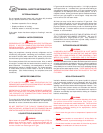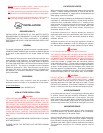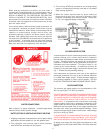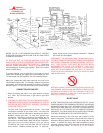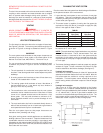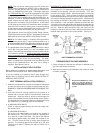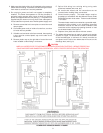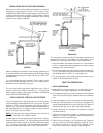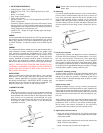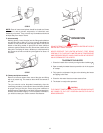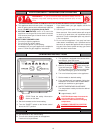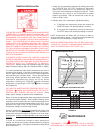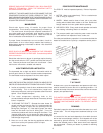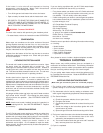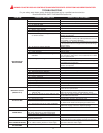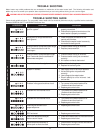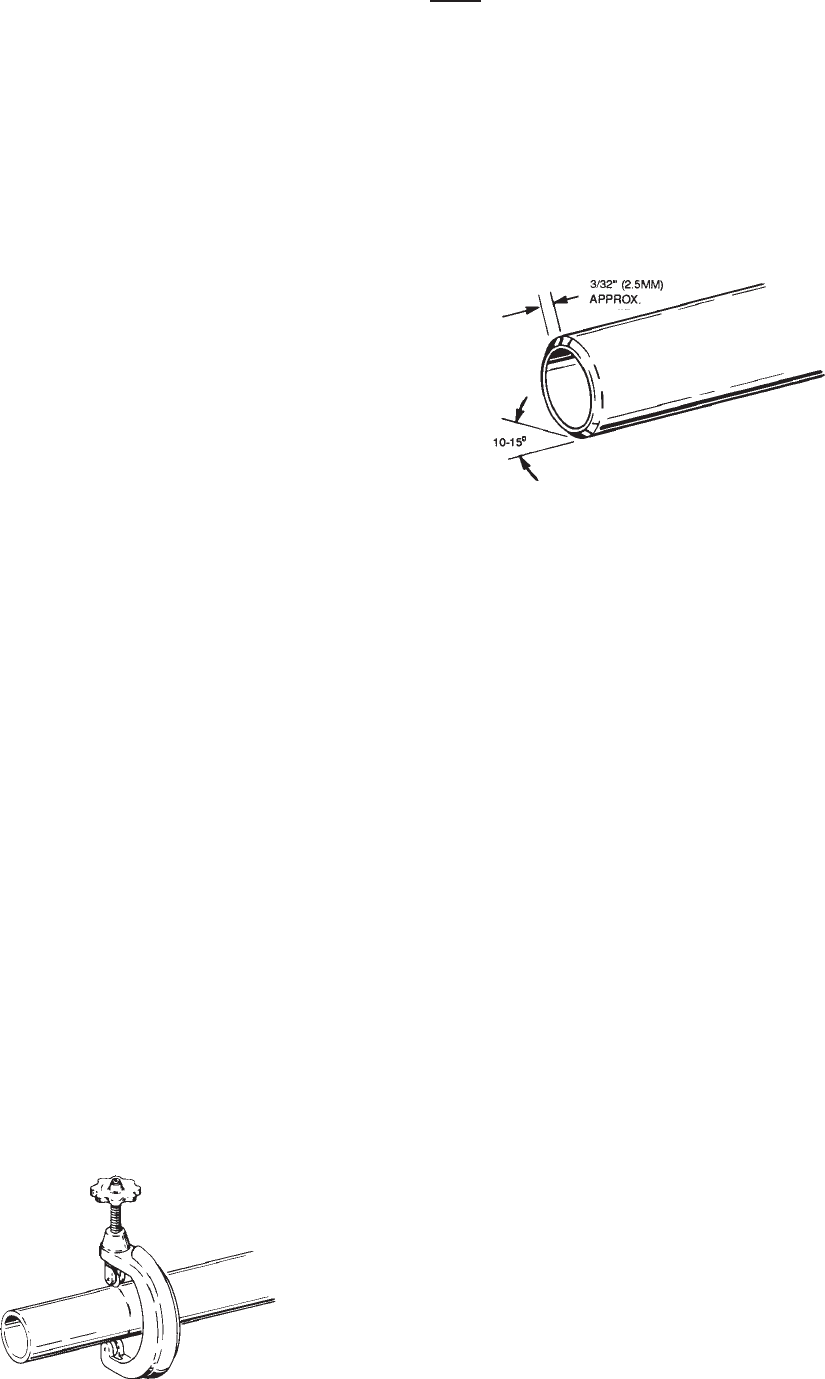
11
2. SELECTION OF MATERIALS
• Cutting Device - Saw or Pipe Cutter
• Deburring Tool, Knife, File, or Beveling Machine (2" and
above)
• Brush - Pure Bristle
• Rag - Cotton (Not Synthetic)
• Primer and Cleaner
• Solvent Cement - PVC for PVC Components and CPVC for
CPVC Components
• Containers - Metal or Glass to hold Primer and Cement. Select
the type of PVC or CPVC materials to be used on the basis of
their application with respect to chemical resistance, pressure
rating, temperature characteristics, etc.
• Insertion Tool - Helpful for larger diameter pipe and fittings
(6" and above).
PRIMER
It is recommended that Tetrahydrofuran (THF) be used to prepare
the surfaces of pipe and fittings for solvent welding. Do not use
water, rags, gasoline or any other substitutes for cleaning PVC
or CPVC Surfaces. A chemical cleaner such as MEK may be
used.
CEMENT
The cement should be a bodied cement of approximately 500 to
1600 centipoise viscosity containing 10-20% (by weight) virgin
PVC material solvated with tetrahydrofuran (THF). Small
quantities of dimethyl formamide (DMF) may be included to act
as a retarding agent to extend curing time. Select the proper
cement; Schedule 40 cement should be used for Schedule 40
pipe. Never use all-purpose cements, commercial glues and
adhesives or ABS cement to join PVC or CPVC pipe and fittings.
SAFETY PRECAUTION: PRIMERS AND CEMENTS ARE
EXTREMELY FLAMMABLE, AND MUST NOT BE STORED OR
USED NEAR HEAT OR OPEN FLAME. ALSO, USE ONLY IN A
WELL-VENTILATED AREA.
APPLICATORS
Select a suitable pure bristle type paint brush. Use a proper
width brush or roller to apply the primer and cement (see chart
below). Speedy application of cement is important due to its
fast drying characteristics. IMPORTANT NOTE: A dauber type
applicator should only be used on pipe sizes 2" and below. For
larger diameter pipe, a brush or roller must be used.
3. MAKING THE JOINT
A. Cutting
Pipe must be squarely cut to allow for the proper interfacing
of the pipe end and the fitting socket bottom. This can be
accomplished with a miter box saw or wheel type cutter. Wheel
type cutters are not generally recommended for larger
diameters since they tend to flare the corner of the pipe end.
If this type of cutter is used, the flare on the end must be
completely removed.
STEP A
NOTE: Power saws should be specifically designed to cut
plastic pipe.
B. Deburring
Use a knife, plastic pipe deburring tool, or file to remove burrs
from the end of small diameter pipe. Be sure to remove all
burrs from around the inside as well as the outside of the
pipe. A slight chamfer (bevel) of about 10°-15° should be
added to the end to permit easier insertion of the pipe into the
end of the fitting. Failure to chamfer the edge of the pipe may
remove cement from the fitting socket, causing the joint to
leak.
STEP B
C. Test dry fit of the joint
Tapered fitting sockets are designed so that an interference
fit should occur when the pipe is inserted about 1/3 to 2/3 of
the way into the socket. Occasionally, when pipe fitting
dimensions are at the tolerance extremes, it will be possible
to fully insert dry pipe to the bottom of the fitting socket. When
this happens, a sufficient quantity of cement must be applied
to the joint to fill the gap between the pipe and fitting. The gap
must be filled to obtain a strong, leak-free joint.
D. Inspection, cleaning, priming
Visually inspect the inside of the pipe and fitting sockets and
remove all dirt, grease or moisture with a clean dry rag. If
wiping fails to clean the surfaces, a chemical cleaner must
be used. Check for possible damage such as splits or cracks
and replace if necessary.
Depth-of-entry mark
Marking the depth of entry is a way to check if the pipe has
reached the bottom of the fitting socket in step F. Measure the
fitting depth and mark this distance on the pipe O.D. You may
want to add several inches to the distance and make a second
mark as the primer and cement will most likely destroy your
first one.
Apply primer to the surface of the pipe and fitting socket with
a natural bristle brush (see chart). This process softens and
prepares the PVC or CPVC for the solvent cementing step.
Move quickly and without hesitation to the cementing
procedure while the surfaces are still wet with primer.
E. Application of solvent cement
• Apply the solvent cement evenly and quickly around the
outside of the pipe at a width a little greater than the depth
of the fitting socket.
• Apply a light coat of cement evenly around the inside of the
fitting socket. Avoid puddling.
• Apply a second coat of cement to the pipe end.



